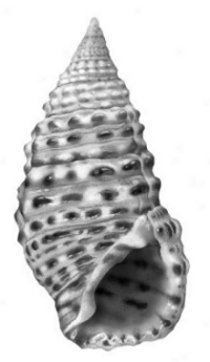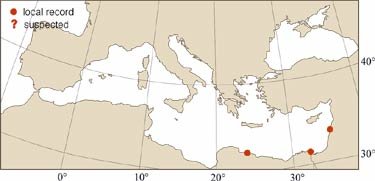
|
Relevant Synonyms
Misidentification
|
|
| drawing: Tuvia Kurz |
|
SHORT
DESCRIPTION
color :
variable, with a whitish background and usually dark beads or series of dark spots on the cords; occasionally with dark spiral lines, bands, or interspaces of cords.
common size :
15-20 mm. |
DISTINGUISHING CHARACTERISTICS
BIOLOGY / ECOLOGY
habitat :
in the Red Sea, this species usually occurs in large numbers on high rocky intertidal platforms (Houbrick, 1985) and partially buries in the patches of sand during low tide. |
|
1st
Mediterranean record
|

|
|
DISTRIBUTION
|
ESTABLISHMENT SUCCESS
speculated reasons for success :
|
|
|
MODE OF
INTRODUCTION |
IMPORTANCE TO
HUMANS |
|
KEY
REFERENCES
|
|
|
 Cerithium bifasciatum Sowerby, 1855
Cerithium bifasciatum Sowerby, 1855